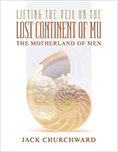Mu – Fact or Fiction
Elizabeth G. Wilcox
Pageant Press, Inc. NY
1963

This book provides a one-sided approach to answering the question posed in the title. In the preface, the author makes it clear:
Many archaeologists ignore the facts. One reason for their not admitting the truth is that so few can decipher the tablets, especially those written in prehistoric times. Archaeology involves reading as well as uncovering them.
Essentially, we are told that archaeologists are too stupid to believe in the Lost Continent of Mu due to the inability to decipher unidentified prehistoric tablets. Such a ludicrous statement to dismiss the “Fiction” aspect from the discussion does not indicate a fair hearing of facts.
Author Wilcox uses the Naacal tablets as the first evidence of Mu. Followed by the Ramayana, the Troano Manuscript, the Codex Cortesianus and the Lhasa Record, she continues almost the same litany as James Churchward, although reduced in size.
There is content other than from James’ works with thirty pages of photos and drawings in the back. There are also many illustrations easily recognizable from James’ works.
Also contained in the preface is a plea for people to work together to achieve “good and happiness.” One has to wonder what that really means. In subsequent passages, the author continues the debunked and discredited theory that ancient Americans built the monumental structures and ruled until the “darker-skinned people drove the while people from the land.” I don’t want to speculate on the author’s motivations, how she expects “good and happiness” will be effected, or put words in her mouth. My thought is that until we, as humans, recognize our shared human experience, allow people the dignity of their history, and treat each human life as sacred then we will have a tough time achieving global “good and happiness.”








 RSS - Posts
RSS - Posts